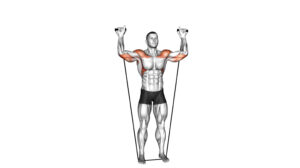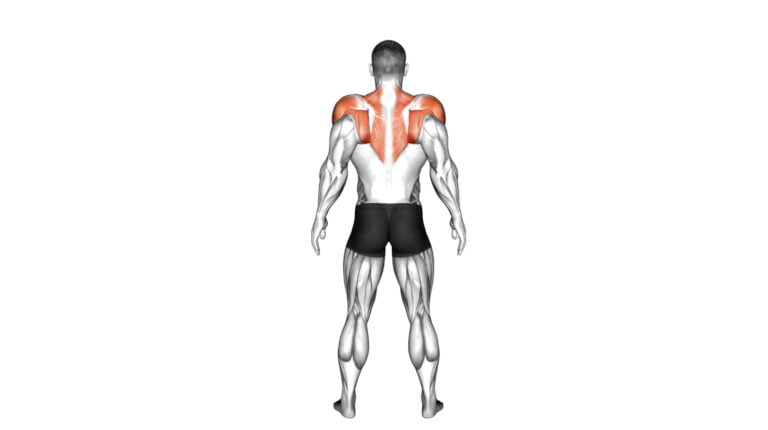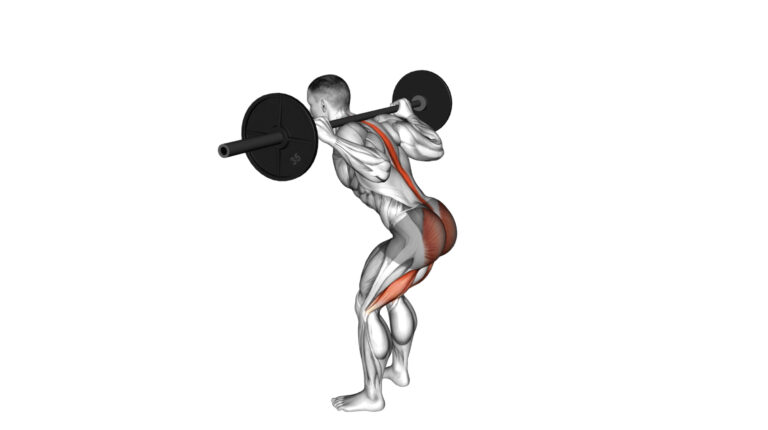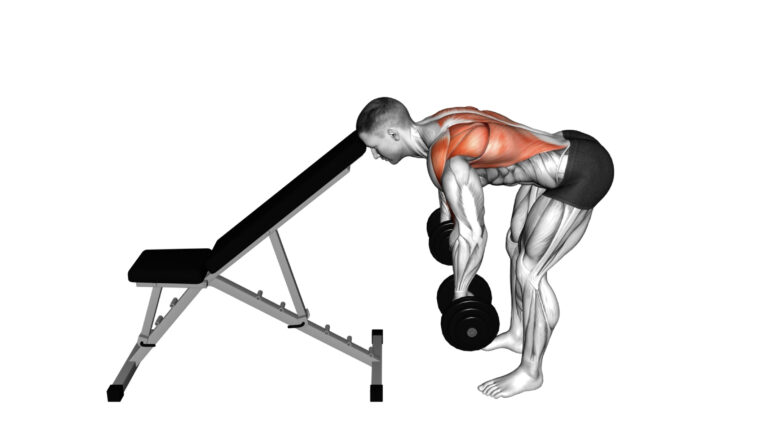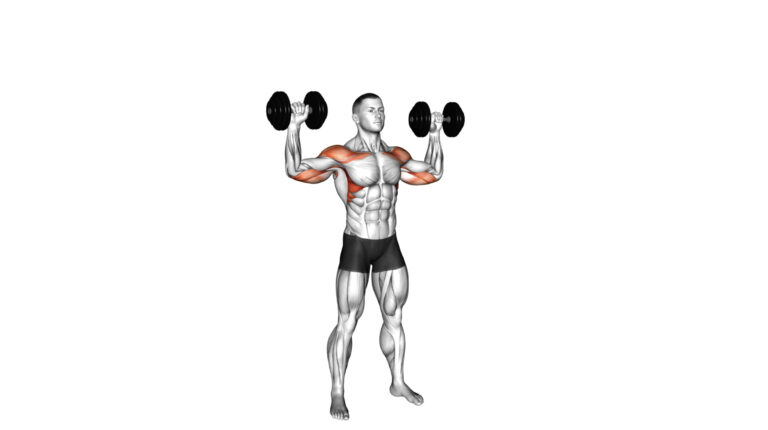Pelvic Floor Exercises for Women: A Comprehensive Approach to Pelvic Floor Health
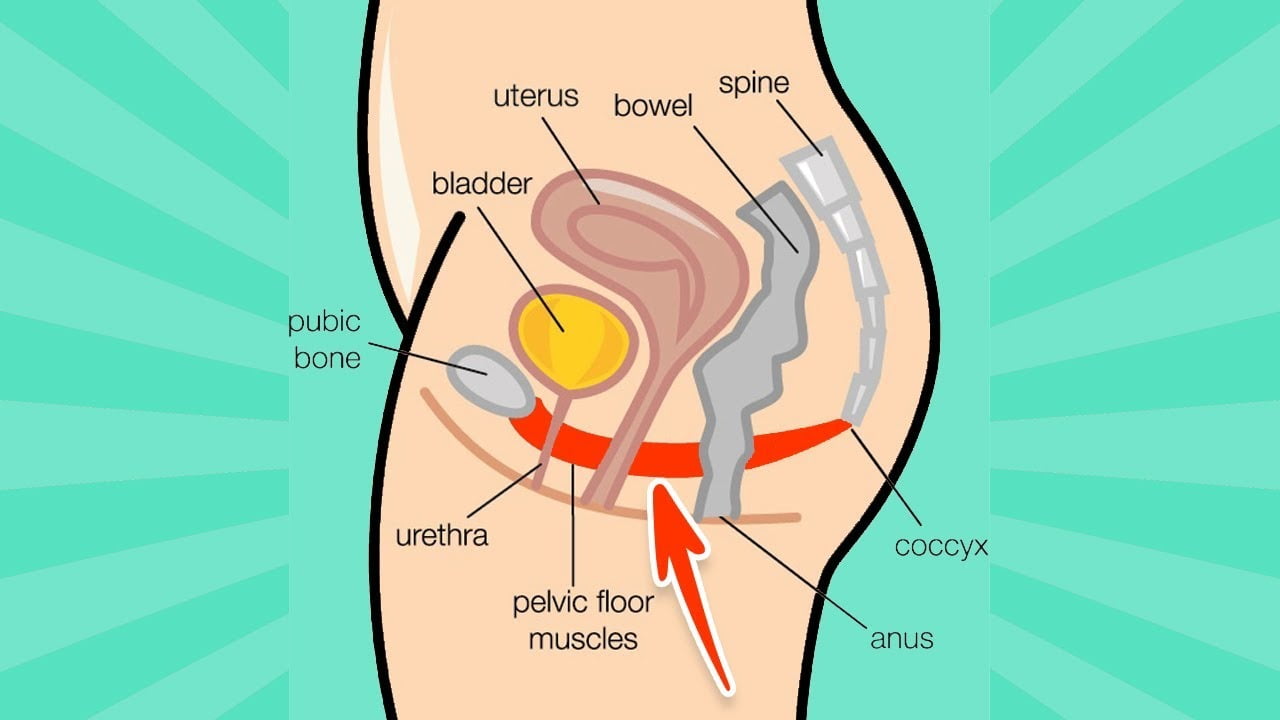
Are you looking to strengthen your pelvic floor muscles?
In this article, you’ll discover the benefits of pelvic floor exercises and learn how to perform them correctly.
Whether you’re dealing with bladder control issues or looking to enhance your sexual satisfaction, these exercises can help.
Watch our instructional video and try out our recommended exercises tailored for women.
With a few lifestyle changes, you can support your pelvic floor health and enjoy the benefits of a strong pelvic floor.
Key Takeaways
- Pelvic floor exercises are important for maintaining bladder and bowel control and supporting pelvic organs.
- Weak pelvic floor muscles contribute to urinary and fecal incontinence, pelvic organ prolapse, and sexual dysfunction.
- Regular pelvic floor exercises can improve bladder control, prevent prolapse, enhance sexual satisfaction, and alleviate lower back pain.
- Adequate fiber intake, hydration, and a balanced diet, along with avoiding heavy lifting and high-impact activities, support pelvic floor muscle health.
Introduction
Let’s begin by understanding the importance of pelvic floor muscles for your health and well-being.
These muscles play a crucial role in supporting your organs, maintaining bladder and bowel control, and enhancing sexual function.
In this blog post, we’ll provide an overview of seven effective pelvic floor exercises specifically designed for women.
Importance of pelvic floor muscles for women’s health and well-being
Strengthening your pelvic floor muscles is crucial for maintaining optimal health and well-being as a woman. The importance of pelvic floor muscles for women’s health and well-being can’t be overstated.
Your pelvic floor muscles play a significant role in supporting your pelvic organs, including the bladder, uterus, and rectum. When these muscles are weak or damaged, it can lead to various health issues such as urinary incontinence, pelvic organ prolapse, and sexual dysfunction.
By strengthening your pelvic floor muscles, you can improve bladder control, prevent pelvic organ prolapse, enhance sexual satisfaction, and even alleviate lower back pain.
In the next section, we’ll provide an overview of the blog post content, where we’ll discuss seven effective pelvic floor exercises for women.
Overview of the blog post content: 7 pelvic floor exercises for women
Continuing from the previous subtopic, you can now learn about seven effective pelvic floor exercises for women. These exercises are specifically designed to target and strengthen the pelvic floor muscles, which play a crucial role in women’s health and well-being.
Pelvic floor exercises for women are essential for maintaining bladder and bowel control, supporting pelvic organs, and improving sexual function. By incorporating these exercises into your daily routine, you can prevent or manage issues such as urinary incontinence, pelvic organ prolapse, and sexual dysfunction.
Some of the most effective pelvic floor exercises for women include kegel exercises, pelvic lifts, deep squats, bridge exercises, clamshells, bird dogs, and pelvic floor drops. These exercises can be done at home, and they require no equipment.
It’s important to note that pelvic floor exercises for women with prolapse may need to be modified or avoided altogether, depending on the severity of the condition. If you have any concerns or are unsure about which exercises are suitable for you, it’s always best to consult with a healthcare professional or a pelvic floor physiotherapist.
Understanding the Pelvic Floor Muscles
Now, let’s talk about the pelvic floor muscles and what they actually are.
These muscles are a group of muscles that form a sling-like structure at the bottom of your pelvis.
They play a crucial role in supporting your pelvic organs, controlling bladder and bowel function, and even contributing to sexual pleasure.
Weak pelvic floor muscles can lead to various issues like urinary incontinence, pelvic organ prolapse, and even sexual dysfunction.
Explanation of what the pelvic floor muscles are
To understand the pelvic floor muscles, it’s important to grasp their role in supporting the organs in your pelvic area. These muscles form a hammock-like structure that stretches from the pubic bone to the tailbone, and from one sitting bone to the other. They play a crucial role in maintaining bladder and bowel control, as well as supporting the uterus, vagina, and rectum.
When these muscles are weak or damaged, it can lead to issues such as urinary incontinence, pelvic organ prolapse, and sexual dysfunction. That’s why pelvic floor exercises for women are essential. By regularly performing exercises to strengthen the pelvic floor, such as Kegels, you can improve muscle tone and prevent or alleviate these problems.
Women’s pelvic floor exercises are often recommended by healthcare professionals, including pelvic floor physical therapists, to help improve muscle function and restore strength and control.
Functions and role of the pelvic floor muscles in the body
You can better understand the functions and role of the pelvic floor muscles by recognizing their crucial support of organs in the pelvic area. These muscles play a vital role in maintaining bladder and bowel control, as well as supporting the uterus, vagina, and rectum.
When the pelvic floor muscles are weak, it can lead to issues such as urinary incontinence, pelvic organ prolapse, and sexual dysfunction. Regular pelvic floor exercises can help strengthen these muscles, improving overall pelvic health. These exercises involve contracting and relaxing the pelvic floor muscles, similar to stopping the flow of urine midstream.
For senior women, pelvic floor exercises are particularly important as they can help prevent or manage common pelvic floor issues that may arise with age.
Common issues and conditions related to weak pelvic floor muscles
Weak pelvic floor muscles can lead to several common issues and conditions that affect women. One of the most prevalent issues is urinary incontinence, which can cause leaks of urine during activities such as laughing, coughing, or exercising.
Additionally, weak pelvic floor muscles can contribute to fecal incontinence, where a person has difficulty controlling bowel movements.
Another condition related to weak pelvic floor muscles is pelvic organ prolapse, in which the organs in the pelvis, such as the bladder, uterus, or rectum, descend into the vaginal canal. This can cause discomfort, pressure, and even pain.
Furthermore, sexual dysfunction, such as decreased sensation or pain during intercourse, can also be associated with weak pelvic floor muscles.
Understanding these common issues and conditions emphasizes the importance of strengthening the pelvic floor muscles for overall well-being and quality of life.
Benefits of Strengthening the Pelvic Floor Muscles
When you strengthen your pelvic floor muscles, you can experience improved bladder and bowel control, allowing you to better manage and prevent leaks.
By engaging these muscles, you can also reduce the risk of pelvic organ prolapse, a condition where the pelvic organs descend into the vaginal canal.
Strengthening your pelvic floor can also enhance sexual satisfaction and intimacy, support your body during pregnancy and postpartum recovery, and contribute to overall core stability and better posture.
Improved bladder and bowel control
Strengthening the pelvic floor muscles can lead to improved control over bladder and bowel functions. By engaging in pelvic floor exercises, you can strengthen the muscles that support these vital organs, resulting in better control and prevention of urinary and fecal incontinence.
When these muscles are weak, activities such as coughing, sneezing, or even laughing can cause leaks or accidents. However, by regularly practicing exercises such as Kegels, you can enhance the strength and endurance of your pelvic floor muscles. This will allow you to have better control over your bladder and bowel, reducing the frequency and severity of accidents.
Prevention and management of pelvic organ prolapse
To prevent and manage pelvic organ prolapse, strengthen your pelvic floor muscles with regular exercises.
Pelvic organ prolapse occurs when the muscles and tissues that support the pelvic organs become weak or damaged, causing the organs to descend into the vaginal canal. This can lead to uncomfortable symptoms such as a feeling of heaviness in the pelvis, urinary incontinence, and difficulty emptying the bladder.
By strengthening your pelvic floor muscles, you can provide better support for your pelvic organs and reduce the risk of prolapse. Regular exercises, such as Kegels, can help improve the strength and tone of these muscles.
It’s recommended to perform these exercises daily to achieve the best results.
Enhanced sexual satisfaction and intimacy
Experience enhanced sexual satisfaction and intimacy by strengthening your pelvic floor muscles. Engaging in regular pelvic floor exercises can have a positive impact on your sexual well-being.
Strong pelvic floor muscles can lead to increased sensitivity, improved arousal, and more intense orgasms. By strengthening these muscles, you can also enhance your ability to control and tighten your vaginal muscles during intercourse, which can heighten pleasure for both you and your partner.
Additionally, a strong pelvic floor can help improve blood flow to the genital area, leading to improved lubrication and reduced discomfort during sex.
Support during pregnancy and postpartum recovery
During pregnancy and postpartum recovery, you can benefit from the support provided by strong pelvic floor muscles. As your body undergoes significant changes during this time, it’s essential to have a strong foundation to support your growing baby and aid in the recovery process.
Strong pelvic floor muscles can help prevent and alleviate common issues such as urinary incontinence, pelvic organ prolapse, and back pain. By strengthening these muscles, you can improve your overall pelvic stability, which is crucial during pregnancy and after giving birth.
Additionally, strong pelvic floor muscles can enhance the effectiveness of contractions during labor, making the birthing process smoother. So, by incorporating pelvic floor exercises into your routine, you can experience a more comfortable pregnancy and a faster recovery postpartum.
Strengthening your pelvic floor muscles is just the beginning of achieving overall improvement in core stability and posture.
Overall improvement in core stability and posture
Strengthening your pelvic floor muscles can significantly improve your core stability and posture.
When the pelvic floor muscles are strong, they provide support to the organs in the pelvic area, including the bladder, uterus, and rectum. This support helps to maintain proper alignment of the spine and pelvis, which in turn improves overall posture.
With a strong pelvic floor, you’re able to engage your core muscles more effectively, leading to better stability and balance during daily activities and exercise.
Additionally, a strong pelvic floor can help alleviate back pain and prevent injuries by reducing the strain on the lower back.
Watch Pelvic Floor Exercises For Women Video
To learn how to properly perform pelvic floor exercises, you can watch a video specifically designed for women. These videos are a great resource because they provide visual demonstrations and instructions on how to do the exercises correctly. By watching these videos, you can ensure that you’re engaging the correct muscles and using the right technique.
In the video, you’ll see a qualified instructor guiding you through each exercise step by step. They’ll explain the purpose of each exercise and how it benefits your pelvic floor muscles. You’ll also learn how to properly breathe while performing the exercises, as proper breathing technique is crucial for effective pelvic floor exercises.
The video will demonstrate various exercises that target different areas of the pelvic floor. This will allow you to customize your workout routine based on your specific needs. Whether you’re a beginner or have been doing pelvic floor exercises for a while, watching these videos can help you improve your form and maximize the effectiveness of your workouts.
Remember, consistency is key when it comes to pelvic floor exercises. By watching the video and following along with the instructor, you can ensure that you’re performing the exercises correctly and making progress towards a stronger pelvic floor.
7 Pelvic Floor Exercises for Women
Now let’s go over the specific exercises that can help strengthen your pelvic floor.
The first exercise is the kneeling hip thrust, followed by the frog pump, bridge hip abduction, lying double glute lift, and frog glute bridge.
These exercises target the muscles of the pelvic floor and can be done at home or at the gym.
Incorporating these exercises into your routine can help improve bladder control and overall pelvic floor strength.
Exercise 1: Kneeling Hip Thrust
You can begin the pelvic floor exercise routine with a kneeling hip thrust. This exercise targets your glutes, core, and pelvic floor muscles.
Start by kneeling on all fours, with your knees directly under your hips and your hands directly under your shoulders. Engage your core and squeeze your glutes as you lift your knees a few inches off the ground.
Then, thrust your hips forward while maintaining a strong core and squeezing your glutes. Hold this position for a few seconds, then slowly lower your hips back down to the starting position.
Repeat this exercise for 10-15 repetitions. Remember to breathe steadily and focus on engaging your pelvic floor muscles throughout the movement.
Exercise 2: Frog Pump
Continue targeting your glutes, core, and pelvic floor muscles with the next exercise: the Frog Pump.
This exercise specifically focuses on strengthening your pelvic floor muscles while also engaging your glutes and core.
To perform the Frog Pump, start by lying on your back with your knees bent and feet together. Slowly lift your hips off the ground, squeezing your glutes and engaging your pelvic floor muscles.
As you lift your hips, separate your knees out to the sides, resembling a frog’s position. Hold for a few seconds, then lower your hips back down to the starting position.
Repeat this movement for a set number of repetitions, feeling the burn in your glutes, core, and pelvic floor muscles.
Incorporating the Frog Pump into your workout routine can help improve pelvic floor strength and stability.
Exercise 3: Bridge Hip Abduction
To continue strengthening your pelvic floor muscles, engage your glutes and core with the Bridge Hip Abduction exercise.
Lie on your back with your knees bent and feet flat on the floor. Place a resistance band around your thighs, just above your knees.
Press through your heels, lift your hips off the ground, and squeeze your glutes. Once you’re in the bridge position, slowly open your knees apart, against the resistance of the band.
Hold for a few seconds, then bring your knees back together. Repeat this movement for 10-12 reps.
The Bridge Hip Abduction exercise targets the glutes and outer thighs, while also engaging your pelvic floor muscles.
This exercise prepares you for the next exercise, which is the lying double glute lift.
Now, let’s move on to exercise 4: lying double glute lift.
Exercise 4: Lying Double Glute Lift
Now, let’s move on to the lying double glute lift, an exercise that builds upon the previous one by targeting your glutes, outer thighs, and pelvic floor muscles.
To perform this exercise, start by lying on your back with your knees bent and feet flat on the floor. Place a resistance band just above your knees.
Engage your pelvic floor muscles and lift your hips off the ground, squeezing your glutes and outer thighs. Hold for a few seconds and then slowly lower your hips back down. Repeat this exercise for about 10-12 repetitions.
The lying double glute lift is a great way to strengthen your pelvic floor muscles while also toning your glutes and outer thighs. Incorporate it into your regular exercise routine to see improvements in pelvic floor strength and overall lower body stability.
Exercise 5: Frog Glute Bridge
Begin by lying on your back with your knees bent and feet flat on the floor, and position a resistance band just above your knees.
The frog glute bridge is an effective exercise for strengthening your pelvic floor muscles. Start by engaging your core and squeezing your glutes.
Then, press through your heels as you lift your hips off the floor, creating a straight line from your knees to your shoulders. As you lift, push your knees out against the resistance band, feeling the activation in your glutes and inner thighs.
Hold the position for a few seconds, then lower your hips back down to the starting position. Repeat this exercise for about 10 to 15 repetitions, focusing on maintaining proper form and engaging your pelvic floor muscles throughout.
Exercise 6: Frog Hip Thrust
After completing the frog glute bridge exercise, you can move on to the next exercise in the series, which is the frog hip thrust.
This exercise specifically targets your glutes and pelvic floor muscles.
To perform the frog hip thrust, start by lying on your back with your knees bent and feet together. Place your arms by your sides for support.
Then, engage your glutes and lift your hips off the ground, squeezing your pelvic floor muscles as you lift. Hold for a few seconds at the top and then lower your hips back down to the starting position.
Repeat this movement for the recommended number of repetitions.
The frog hip thrust is a great way to strengthen your pelvic floor and improve overall pelvic stability.
Exercise 7: Reverse Plank
To strengthen your pelvic floor muscles, incorporate the reverse plank exercise into your routine.
The reverse plank is a challenging exercise that targets your core and pelvic floor muscles.
To perform this exercise, start by sitting on the floor with your legs extended in front of you and your hands placed on the floor behind your hips.
Press through your palms and lift your hips off the ground, creating a straight line from your head to your heels.
Engage your pelvic floor muscles as you hold this position for a few seconds, then lower your hips back down.
Repeat this exercise for several repetitions, gradually increasing the duration of each hold.
The reverse plank is an effective way to strengthen your pelvic floor muscles and improve overall core stability.
Now, let’s move on to some tips for performing pelvic floor exercises correctly.
Tips for Performing Pelvic Floor Exercises Correctly
To perform pelvic floor exercises correctly, it’s important to focus on proper technique and form for each exercise. You should also pay attention to the frequency and duration of your exercises, gradually increasing intensity over time.
Remember to listen to your body and seek professional guidance if needed to ensure you’re getting the most out of your pelvic floor exercises.
Proper technique and form for each exercise
For optimal results, it’s essential to perform pelvic floor exercises with proper technique and form throughout each repetition. Paying attention to your technique will ensure that you’re effectively targeting and strengthening your pelvic floor muscles.
When performing exercises such as kegels, make sure to contract your pelvic floor muscles without tensing your abdomen, buttocks, or thighs. It’s important to breathe normally and not hold your breath during the exercise.
Maintain a steady and controlled pace, avoiding quick or jerky movements. Focus on squeezing and lifting your pelvic floor muscles, and then relax them fully before starting the next repetition.
Frequency and duration of exercises
To effectively perform pelvic floor exercises and achieve optimal results, you should focus on the frequency and duration of your workouts. Consistency is key when it comes to strengthening your pelvic floor muscles. Aim to do these exercises at least three times a week, with a minimum of 10 repetitions each time.
It’s important to give your muscles time to rest and recover between sessions, so avoid doing them on consecutive days. As for the duration, start with holding each contraction for about 5 seconds and gradually increase it to 10 seconds as your muscles get stronger.
Remember to breathe normally and avoid tensing other muscles while doing these exercises. By following these tips, you’ll be on your way to a stronger pelvic floor.
Gradual progression and increasing intensity
As you gradually progress with your pelvic floor exercises, it’s important to increase the intensity while maintaining proper form and technique. Gradual progression allows your muscles to adapt and become stronger over time.
Start by performing the exercises at a comfortable intensity level and gradually increase the difficulty as your muscles become stronger. One way to do this is by adding resistance to your exercises, such as using a resistance band or a weighted object. You can also try increasing the duration of each contraction or adding more repetitions to your routine.
However, it’s crucial to listen to your body and not push yourself too hard. If you experience pain or discomfort, reduce the intensity or take a break.
Listening to your body and seeking professional guidance if needed
When performing pelvic floor exercises, it’s important to listen to your body and, if needed, seek professional guidance. Your body will provide signals if something doesn’t feel right or if you’re experiencing pain or discomfort during the exercises. Ignoring these signals can lead to further problems.
It’s crucial to pay attention to how your muscles feel and adjust the exercises accordingly. If you’re unsure about the correct technique or if you have any concerns, don’t hesitate to consult a healthcare professional or a pelvic floor specialist. They can assess your condition, provide personalized guidance, and ensure that you’re performing the exercises correctly to maximize their effectiveness. Seeking professional guidance will help you avoid potential mistakes and achieve optimal results.
Transitioning into the subsequent section about lifestyle changes to support pelvic floor health, let’s explore additional ways to improve your pelvic floor strength and overall well-being.
Lifestyle Changes to Support Pelvic Floor Health
To support the health of your pelvic floor, there are several lifestyle changes you can make.
Maintaining a healthy weight is important, as excess weight can put additional pressure on your pelvic floor muscles.
Avoiding constipation and straining during bowel movements can also help prevent unnecessary strain on these muscles.
Additionally, proper hydration, a balanced diet, avoiding heavy lifting and high-impact activities, and managing chronic coughing or sneezing are all important factors in supporting your pelvic floor health.
Maintaining a healthy weight
To maintain a healthy weight and support your pelvic floor health, focus on incorporating regular exercise into your daily routine. Exercise not only helps you burn calories and maintain a healthy weight but also strengthens your pelvic floor muscles. Aim for at least 150 minutes of moderate-intensity aerobic activity or 75 minutes of vigorous-intensity aerobic activity every week. You can choose activities such as brisk walking, jogging, cycling, swimming, or dancing.
Additionally, include strength training exercises two or more days a week to target and tone your muscles.
Apart from exercise, make sure to eat a balanced diet that’s rich in fruits, vegetables, whole grains, lean proteins, and healthy fats. Stay hydrated and limit your intake of sugary and processed foods.
Avoiding constipation and straining during bowel movements
Make sure you include an adequate amount of fiber in your diet to avoid constipation and straining during bowel movements. Fiber helps to add bulk to your stool and softens it, making it easier to pass. Aim for at least 25 to 30 grams of fiber each day.
You can increase your fiber intake by incorporating foods like fruits, vegetables, whole grains, and legumes into your meals. Additionally, it’s important to drink plenty of water throughout the day to keep your stool soft and easy to pass.
Regular exercise can also help promote regular bowel movements and prevent constipation. By making these lifestyle changes, you can avoid constipation and straining, which can put added pressure on your pelvic floor muscles.
Proper hydration and balanced diet
Ensure that you maintain proper hydration and a balanced diet to support the health of your pelvic floor muscles. Staying hydrated is essential for overall health, including the function of your pelvic floor muscles. Aim to drink at least eight glasses of water per day and increase your fluid intake if you’re physically active or live in a hot climate.
Additionally, a balanced diet rich in fiber, fruits, vegetables, lean proteins, and whole grains can promote regular bowel movements and prevent constipation. Avoiding excessive caffeine and alcohol consumption is also important, as they can dehydrate your body and irritate the bladder and pelvic floor muscles.
Avoiding heavy lifting and high-impact activities
To support the health of your pelvic floor muscles, it’s important to avoid heavy lifting and high-impact activities. These activities can put excessive strain on your pelvic floor, weakening the muscles and potentially leading to issues like pelvic organ prolapse or urinary incontinence.
When lifting heavy objects, such as weights or furniture, the increased pressure can cause the pelvic floor muscles to stretch and potentially tear. Similarly, high-impact activities like running or jumping can also place strain on the pelvic floor, leading to muscle weakness or damage.
Instead, focus on low-impact exercises like walking, swimming, or cycling, which are gentler on the pelvic floor. Additionally, be mindful of your body mechanics when lifting objects, ensuring that you engage your core and use proper lifting techniques to minimize strain on the pelvic floor.
Managing chronic coughing or sneezing
To manage chronic coughing or sneezing and support the health of your pelvic floor, it’s important to address any underlying causes and make necessary lifestyle changes. Chronic coughing or sneezing can put excessive pressure on your pelvic floor muscles, leading to issues like urinary incontinence or pelvic organ prolapse.
To reduce the strain on your pelvic floor, it’s crucial to manage your chronic cough or sneeze. You can start by identifying the triggers and seeking treatment for the underlying condition causing the cough or sneeze. Additionally, practicing good coughing or sneezing techniques, such as covering your mouth and nose with a tissue or elbow, can help minimize the impact on your pelvic floor.
Maintaining a healthy lifestyle, including staying hydrated and avoiding irritants like smoking, can also contribute to managing chronic coughing or sneezing and supporting your pelvic floor health.
Conclusion
Now that you have learned about the importance of pelvic floor muscle strength and the 7 exercises to support it, it’s time to take action.
Make a commitment to incorporate these exercises into your regular routine to strengthen your pelvic floor and improve your overall quality of life.
Recap of the importance of pelvic floor muscle strength
You can’t underestimate the significance of maintaining strong pelvic floor muscles. The pelvic floor muscles play a crucial role in supporting your pelvic organs, such as the bladder, uterus, and rectum. Weak pelvic floor muscles can lead to various problems, including urinary incontinence, pelvic organ prolapse, and diminished sexual function.
By consistently performing pelvic floor exercises, you can improve the strength and endurance of these muscles, reducing the risk of these issues. Regularly engaging in exercises such as Kegels, squats, bridges, and pelvic floor contractions can help you maintain a healthy pelvic floor.
Encouragement to incorporate the 7 pelvic floor exercises into a regular routine
By consistently incorporating these 7 pelvic floor exercises into your regular routine, you can effectively strengthen and maintain the health of your pelvic floor muscles. Remember, consistency is key when it comes to exercising any muscle group, including the pelvic floor.
Set aside a specific time each day to perform these exercises, whether it’s in the morning, during your lunch break, or before bed. Create a routine that works for you and stick to it. It may take some time to see results, but don’t give up.
Stay motivated by reminding yourself of the benefits these exercises can bring, such as better bladder control, improved sexual function, and reduced risk of pelvic floor disorders. Your pelvic floor muscles play a crucial role in your overall well-being, so make their care a priority in your daily life.
Emphasis on the long-term benefits and improved quality of life through pelvic floor muscle strengthening
Consistently incorporating these pelvic floor exercises into your routine will lead to long-term benefits and an improved quality of life through strengthened pelvic floor muscles.
By regularly engaging in these exercises, you can experience a range of positive outcomes that will positively impact your overall well-being.
Strengthening your pelvic floor muscles can help prevent and manage urinary incontinence, allowing you to regain control and confidence in your daily activities.
You may also notice an improvement in sexual satisfaction and orgasm intensity, as strong pelvic floor muscles contribute to heightened sensitivity and muscle control.
Additionally, by strengthening your pelvic floor, you can reduce the risk of pelvic organ prolapse, a condition where the pelvic organs descend into the vaginal canal.
Frequently Asked Questions
How Long Does It Typically Take to See Results From Pelvic Floor Exercises?
Typically, you’ll see results from pelvic floor exercises in a few weeks. Consistency is key, so make sure to do the exercises regularly. Don’t worry, with time and effort, you’ll notice improvements.
Can Men Also Benefit From Performing Pelvic Floor Exercises?
Yes, men can also benefit from performing pelvic floor exercises. These exercises can help strengthen the muscles that support the bladder and bowel, improving control and reducing the risk of incontinence.
Are Pelvic Floor Exercises Only Necessary for Women Who Have Given Birth?
No, pelvic floor exercises are not only necessary for women who have given birth. They can benefit all women regardless of whether or not they have had children. Regular exercise helps strengthen the pelvic floor muscles and can prevent issues like incontinence.
Can Pelvic Floor Exercises Prevent or Treat Urinary Incontinence?
Pelvic floor exercises are effective in preventing and treating urinary incontinence. By strengthening the muscles in your pelvic floor, you can regain control and minimize leaks. Start incorporating these exercises into your routine today.
Are There Any Potential Risks or Side Effects Associated With Pelvic Floor Exercises?
There may be potential risks or side effects associated with pelvic floor exercises. It is important to consult with a healthcare professional to determine if these exercises are suitable for you and to ensure proper technique.

Author
Years ago, the spark of my life’s passion ignited in my mind the moment I stepped into the local gym for the first time. The inaugural bead of perspiration, the initial endeavor, the very first surge of endorphins, and a sense of pride that washed over me post-workout marked the beginning of my deep-seated interest in strength sports, fitness, and sports nutrition. This very curiosity blossomed rapidly into a profound fascination, propelling me to earn a Master’s degree in Physical Education from the Academy of Physical Education in Krakow, followed by a Sports Manager diploma from the Jagiellonian University. My journey of growth led me to gain more specialized qualifications, such as being a certified personal trainer with a focus on sports dietetics, a lifeguard, and an instructor for wellness and corrective gymnastics. Theoretical knowledge paired seamlessly with practical experience, reinforcing my belief that the transformation of individuals under my guidance was also a reflection of my personal growth. This belief holds true even today. Each day, I strive to push the boundaries and explore new realms. These realms gently elevate me to greater heights. The unique combination of passion for my field and the continuous quest for growth fuels my drive to break new ground.







